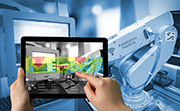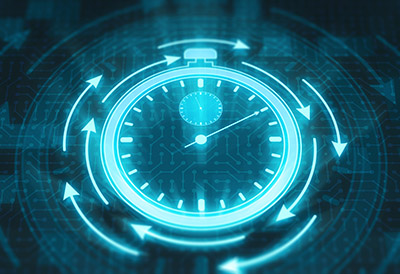
Acuity’s Manufacturing Specialist, Mike Schlagenhaufer, recently sat down with Hossein Davari, Data Scientist at Seismos, Inc., and former research associate at NSF Center for Intelligent Maintenance Systems (IMS) at the University of Cincinnati, to better understand artificial intelligence and its effect on manufacturing.

What are key process improvements you have seen with AI regarding machine uptime?
The Center for Intelligent Maintenance Systems (IMS) at the University of Cincinnati has worked with over 120 industry partners over the past 10 years to develop and implement predictive maintenance technologies to make manufacturing processes more efficient and increase machine uptime.
An example is a project we did with a prominent automobile maker to develop an online air compressor surge detection system. The algorithm we developed was later integrated in the air compressor controller, leading to zero downtime, which brought millions of dollars of saving to the company.
IMS Center also recently worked with Mazak, one of the largest machine tool companies in the world, to develop an intelligent spindle health monitoring system. The technology was showcased at International Manufacturing Technology Show (IMTS) 2018.
What has been the impact of implementing AI technology through IMS?
In 2012, National Science Foundation (NSF) conducted an independent study to evaluate the impact of centers such as IMS. Interviews were conducted with industrial companies to evaluate the value brought to them through these collaborations. Among the nearly 70 centers in the U.S., IMS ranked first with over $850 million of impact as of 2012. That number indicates the potential impact of AI in manufacturing and predictive maintenance.
What are a few steps to help manufacturers implement AI?
Implementing an AI system requires five steps:
- Connection. Data is collected from multiple sources, including controllers, add-on sensors, product quality measurements, etc.
- Conversion. A data-driven model is built based on the acquired data. Machine learning algorithms are used in this stage to derive machine health index and identify vulnerabilities within the manufacturing process.
- Cyber. When dealing with a fleet of similar machines, similarity-based methods are used to benchmark the performance of machines against the rest of the fleet and quantify their performance.
- Cognition. This stage is where actionable information is obtained and visualized on dashboards for users to see and act upon.
- Configuration. This is where the extracted insight is used to optimize the machine operation, production, and maintenance schedule. For example, excessive vibration of a machine tool, when analyzed and quantified, can be used to slow down the spindle speed and feed rate to maintain the desired finish quality.
Are there any cyber security concerns with AI?
There are certainly cyber security concerns when it comes to implementing AI in manufacturing. Manufacturers are worried about having their data stolen or running the risk of their machines being affected by malware. One of the most straightforward solutions for dealing with data security is to use edge computing to process the data locally and ensure the manufacturing process information is not transmitted to the network.
Be sure to check out the next blog in this series, which explores the future of artificial intelligence!
Manufacturing Expert with Acuity
Republished from "focus" blog by Acuity, with approval of author.



